Write Us
We are just a call away
[ LET’S TALK AI ]
X
Discover AI-
Powered Solutions
Get ready to explore cutting-edge AI technologies that can transform your workflow!

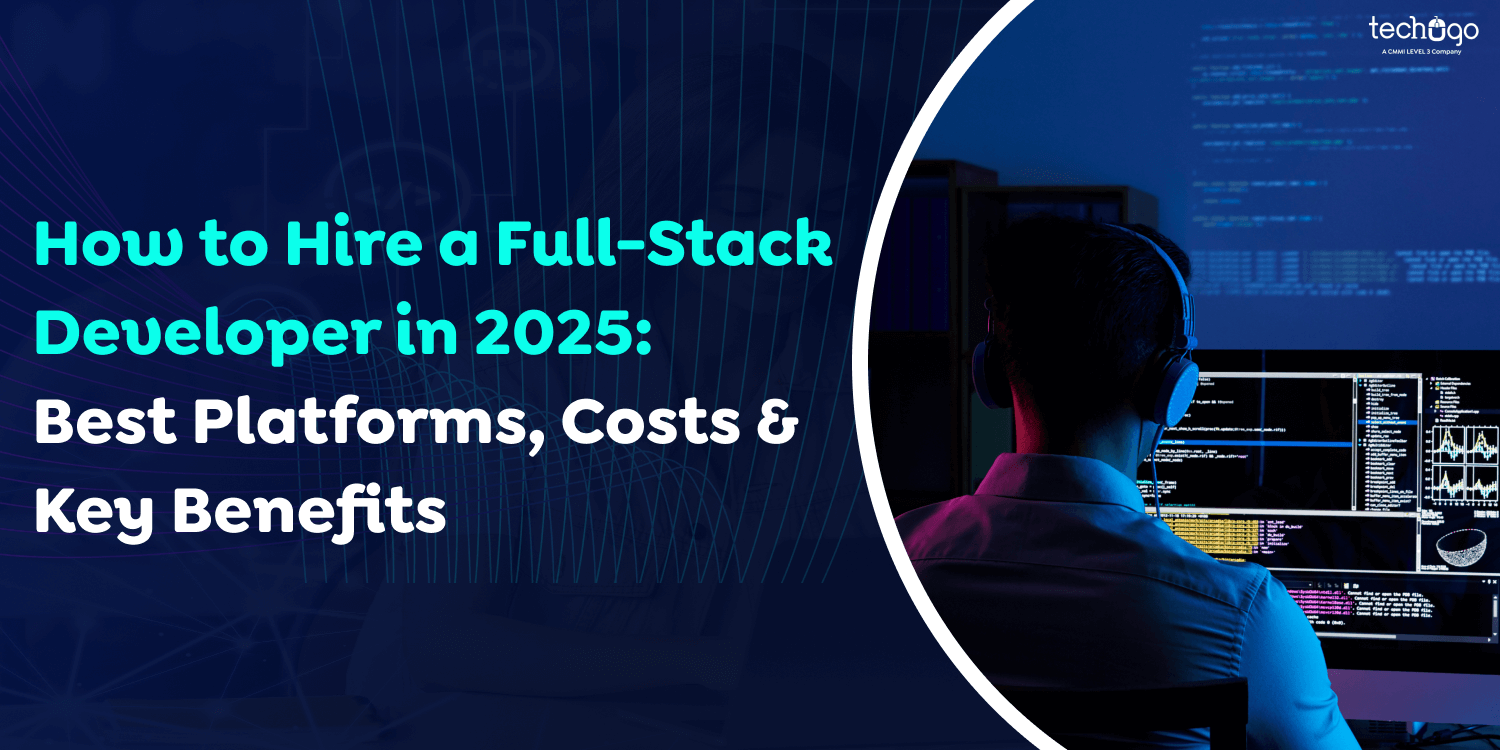
Are you planning to recruit a full-stack developer for your project in 2025?
As you know, the need for flexible full-stack programmers continues to grow. However, it is crucial to identify the technical superiority of the best platform to find talent.
Indeed, a recent Statista study indicates that the demand worldwide for full-stack developers is up by nearly 32% from the year before. Therefore, finding a complete stacker is more challenging than ever.
There are many platforms on the market, so it’s vital to find the best websites to hire iOS developers.
It will help you make well-informed decisions and find the best Full-Stack developer to meet your project’s needs.
After reading this short guide, you’ll know where to hire full-stack engineers. You won’t have to look through endless versions to find the right engineer for your needs.
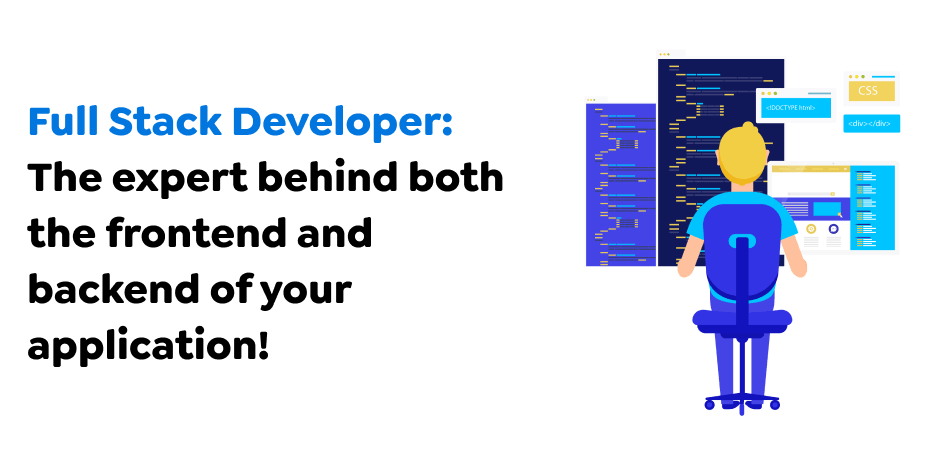
A skilled person who develops both the front end and the back end.
They have extensive user experience creating user-facing elements (front of the end) and managing data storage and processing (back side).
Since both areas require different skills, when you employ a full stack developer in Dubai, they must be proficient in both areas to build fully functional websites.
Also Read – Choosing the Right Mobile App Developer in Dubai for Your Business Growth
Employ full-stack developers adept at making the interface of a website or app users use.
Full-stack programmers are skilled in developing and maintaining software on the server side. This entails managing databases, implementing server logic, and ensuring data security.
They used databases to manage, store, and retrieve data effectively.
They focus on configuring, setting up, and maintaining servers to ensure successful operation of web applications. It is possible to hire full-stack developers to develop fully-fledged web applications.
When you employ fully stacked engineers, they can deploy applications into production environments and make them available to all users worldwide.
They also understand deployment processes, version control systems, and continuous integration/continuous deployment (CI/CD) pipelines.
The following are the benefits of hiring full-stack programmers:
Full-stack developers are experienced in front and backend modern technology, which allows them to handle various responsibilities, from designing and managing databases to constructing user interfaces.
Employing full-stack developers eliminates the need for multiple developers, speeds up project responses, and increases efficiency.
Having a single developer manage each frontend and back-end programming can eliminate the need for numerous developers and cut expenses.
Full-stack developers possess complete knowledge of how the system works, which allows the system to function and improves collaboration and communication among teams.
Due to their array of skills, full-stack developers are more adept at tackling complex problems and developing innovative solutions.
With the help of a mobile app development company in Dubai, extending and managing your web-based applications as your business grows is easy.
In a constantly changing digital world, full-stack developers bring a broad range of technical expertise to help you stay ahead of your competitors.
A full-stack developer can bring an extensive perspective to the design processing Issues:
Full-stack developers have experience in various technical jobs, including repairing security issues, debugging, and troubleshooting.
You will be offered a more customized solution when you hire committed engineers who can perform full-stack development. Communicating in a group can be difficult; however, you can easily communicate your needs to a single person.
When the same individual handles front-end and back-end development, a quicker and better-quality project can be anticipated. Overall efficiency can increase customer experience, allowing for an earlier time to market and sparing them much time.
Development costs are reduced when you complete tasks faster. In addition, only the full-stack developer will be paid through the customer and not the entire group of developers.
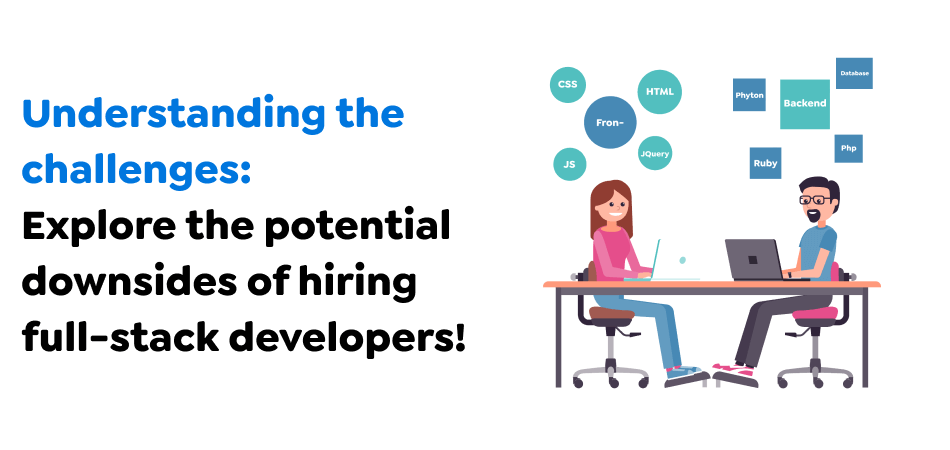 Hiring full-stack software developers has pros and cons like any other development area. Knowing these disadvantages can assist businesses in making better decisions and reduce the risk of suffering losses. Some of the most well-known negatives of employing full-stack software designers are:
Hiring full-stack software developers has pros and cons like any other development area. Knowing these disadvantages can assist businesses in making better decisions and reduce the risk of suffering losses. Some of the most well-known negatives of employing full-stack software designers are:
One of the most common misconceptions about full-stack software developers is that they possess all the skills to resolve all technical issues. However, this is only sometimes the case, as full-stack software developers are not without limitations.
For example, a full-stack developer could be skilled in backend and frontend development, but the demands may differ. For instance, if your project requires complete knowledge of Java Stack, you’ll have to find a Java full-stack software developer who can satisfy those needs.
Full-stack development is as complete as it gets. Developers have to handle each aspect of the task. This includes completing a project using a particular tech stack and reviewing the fundamental modifications that form the application’s core.
Full-stack software developers have to consult manuals from previous versions and refresh their knowledge of more essential details, which can increase the time it takes to complete a project.
As mentioned, Full-stack software developers need to stay current with the latest technology trends. This isn’t easy for developers because there are various trending technologies they must keep up with.
In addition to the most recent developments, full-stack software developers must stay up-to-date with all the newest tools and technologies from their respective areas of expertise. This is not likely to affect their profile as full-stack software developers. However, businesses are stuck with someone lacking the most current information.
Many people ignore the fact that fully-stack developers of software are human beings. They are, therefore, susceptible to human weaknesses, such as a lack of motivation, which could affect the efficiency of your full-stack developer. Consider, for example, that you only hire android developers to meet your requirements.
In these situations, it’s not uncommon for developers to lose their motivation because of lesser competition, incompatibility, and so on. Another reason for hiring multiple full-stack software engineers could be more beneficial than hiring one. This can help employees stay engaged and competitive, ensuring your business is getting the best of their expertise and skills.
Another major issue that full-stack software development engineers face is the need for more responsibility distribution. Their team’s responsibilities tend to overlap because they are accountable for overseeing the development process.
It makes the transition between processes difficult, even with an extensive team that includes full-stack software engineers. This may lead to a lack of understanding and confusion about their specific roles.
Although the vast amount of information on full-stack software developers could be an enormous advantage, the reverse is also feasible. In most cases, user engagement believes full-stack software developers thoroughly know all the technical nuances. This creates cognitive biases, making hiring one person less fair than hiring a variety of experts.
Hiring a single expert will provide them with greater expertise in particular topics. This should be manageable since specialists tend to have a greater depth of knowledge than those with a greater range of expertise. This is among the biggest problems nearly every mobile app development company in UAE faces.
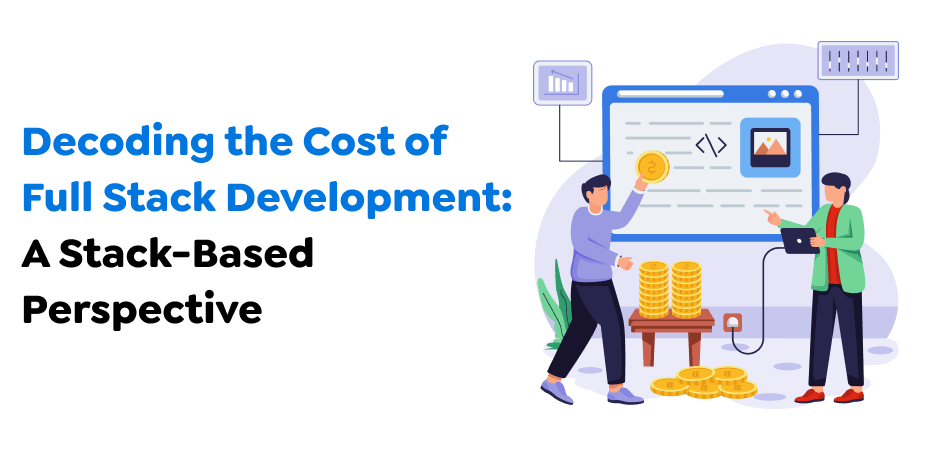
According to the search results, the cost of securing a full-stack developer could differ based on the tech stack. These are a few instances:
The cost of hiring a MEAN full-stack developer can be between $20 and $50 based on the hour, depending on the app developer’s expertise and location.
Full-stack web builders proficient in MERN stack improvement can create fantastic web apps more quickly and cost-effectively. The cost of hiring a full-stack MERN developer may vary from $20 to $50 per hour, depending on the developer’s knowledge, experience, and location.
The cost for hiring a MEVN full-stack designer can vary between $20 to $50 based on the hourly rate, depending on the developer’s field experience and location.
The cost for hiring a complete-tech stack developer from LAMP could range between $20 and $50 by the hour, depending upon the developer’s expertise and the region in which they work.
The cost of securing RoR full-stack developers could range between $20 and $50, depending on the hours of operation and the developer’s experience and the area.
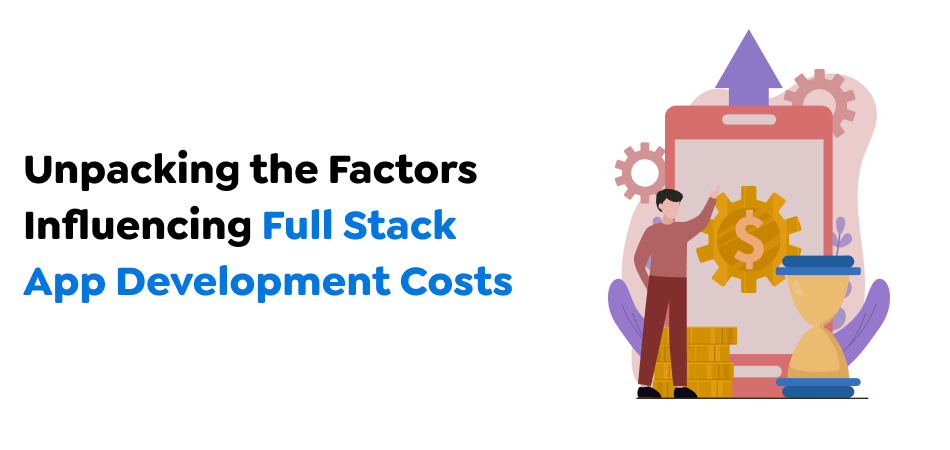
The elements that influence the price of full-stack application development are comparable to the factors impacting the cost to develop an app in Dubai. Here are a few of the main elements that could affect the price of a complete-stack app enhancement:
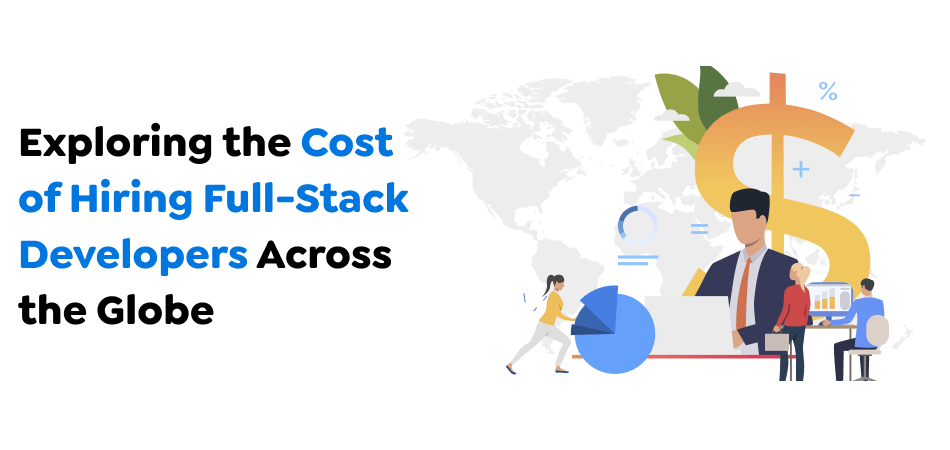
The cost of hiring a full-stack designer in unique regions can differ depending on the developer’s expertise or experience, the location, and the marketing automation conditions. Here’s a general assessment of the price for hiring full-stack builders from distinct regions:
The median earnings for an entire-stack developer across North America are around $110,000, in line with the year. Depending on user experience and location, it could range between $80,000 and $150,000.
The hourly rates for full-stack builders in North America usually range from $81 to $100.
The cost of hiring builders with full stacks in Europe is between $41 and $80, in line with hourly rates, based on the skills and experience.
The hourly average for builders who build complete stacks within Western Europe is around $75.
Full-stack developers typically earn salaries ranging from EUR 20,000 up to EUR50,000 per year in Eastern Europe, which is usually less expensive than in Western Europe.
Finding a complete-stack developer to work in Asia could be significantly reduced to $15 to $50 an hour.
The cost of hiring a full stack developer in Asia is lower than in other regions.
In Australia and New Zealand, the average annual salary for a full-stack developer is about $10,000. Prices for independent developers usually start at $80, which is in line with the hourly rate.
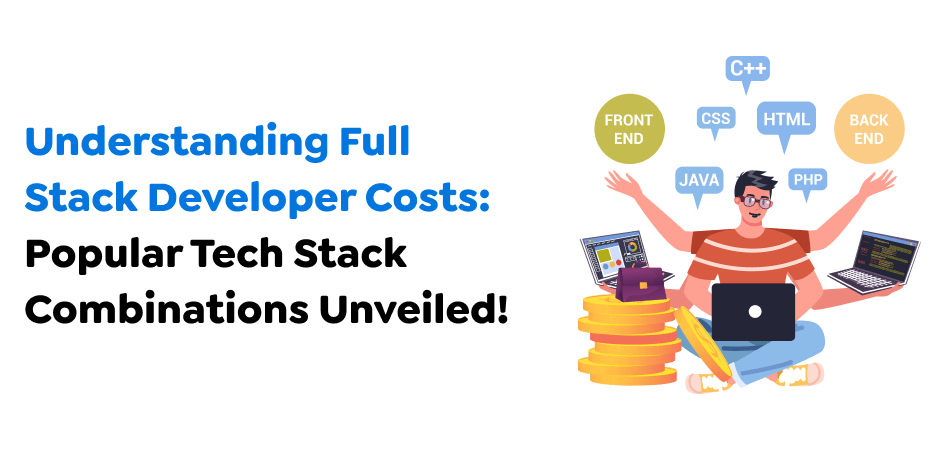
There are three top full-stack configurations that product managers would prefer. It includes different frontend and backend frameworks, and the price will undoubtedly differ by the stack you like and the framework you pick.
Google created AngularJS, a free Javascript MVC framework. The framework is a client-side platform perfectly suitable for Single-Page Applications (SPA ).
A few advantages that come with using Angular include
When you think about using Angular JS in the frontend development of your Rails application, keep in mind the benefits you’re likely to be able to attain:
An Angular framework with Rails is a great match when you are looking for an interoperable client-side platform for your browser and an API for CRUD that can be used to develop your front end. Full-stack development involves knowing your client’s requirements and creating their apps from beginning to end.
Because of the Angular Model View Controller or MVC structure, developers can keep their backend and frontend layers distinct. They do not have to worry about linking and synchronization, which makes their mobile applications extensible and reusable.
A way to achieve independence for the different layers is to use Rails views inside empty shells, where the Angular directives show the data asynchronously.
When used together, the Angular and Rails pair can do wonders. Rails is known for its powerful server APIs, while AngularJS is a master tool for creating client-side applications.
Rails handles all backend requirements, including cache, ORM, database connectivity, and business logic. However, Angular is customarily dedicated to creating its User Interface.
API endpoints may be needed to access information from the database, unlike Rails Core, where you can access it directly. However, you can utilize these endpoints independently since your API remains the same.
The Rails framework is a standard over-configuration feature that eases developers’ work. Developing code is easy using Rails. The Rails pipeline allows the concatenation, organization, and minimization of JavaScript.
All in all, Angular reduces your app response time by waiting and clicking while waiting, while its Rails API backend can support every business-related logic you can imagine. We’ve created a step-by-step guide to help you build an AngularJS application using Rails. Rails framework.
The glorious combination with ReactJs Ruby on Rails has significant advantages as a technology combination that can increase your company’s effectiveness. We’ll see how this full-stack combination achieves success through real-time application cases.
The power generated through ReactJS and Ruby on Rails can reduce the time your website or web app takes to respond. HVMN operates as an online supplementary store, and the importance of website performance and SEO for an eCommerce company is evident.
After upgrading their system to use ReactJ and RoR, they experienced a 90% improvement in response time, which was reduced from 1100 milliseconds to 120 milliseconds. In non-technical terms, they enhanced the user experience by allowing more excellent conversion rates.
Justin Gordan developed the gem, which has helped the app development company restore its customers and elevate its business to a new level. The gem is available on GitHub.
Egghead.io is an online platform for the latest technology education, which is subject to timeouts every hour. They were not aware of why and opted to use ReactJS and RoR. They were pleasantly surprised by the improvement in memory use and the speed of response.
If you’ve got a brilliant idea but are worried about the time it takes to notice the taker app, the React framework Ruby on Rails has fast app development speed. It will speed up the time to market using the freemium business model.
However, if you intend to profit from a massive user base and ad revenue, there may be better choices than these full-stack combinations.
Combining ReactJS and Rails is a must. You need to increase your learning curve, but you will have your prototype ready in the shortest time. Your MVP development using Ruby on Rails will succeed for the app you have in mind.
You can expect massive community support when you use RoR and all sorts of required features. Because React is a Facebook product, the APIs for your app will not change. Thus, you’ll have a stable version of your enterprise application.
The third and last combination of Frontend and Backend is a deadly mix of Vue.js and Rails. Vue.js is a dynamic JS framework for creating web applications. It allows developers to write executable and testable code that is testable and manageable. Vue allows two-way communication, has the greatest flexibility, comes with extensive documentation, has an easy design, and is very responsive.
Rails is the best backend for your VueJS application since it offers everything you need, including Web sockets, ORM email, and more.
If you’re using Vue.js and RoR, check the gem on GitHub to get Vue on rails. The webpack bundle is the most suitable choice for Rails 5. Understanding what you can do with Vue.js Frontend for which types of projects is essential. This is a list of classifications that we’ve compiled to help you.
Your app’s users will stay longer if they are interested in and captivated by its view. Animations can help in this regard. Modern websites and apps employ animations that were not available before.
If you use Vue.js within your app’s front End, you will receive a remarkably adaptable API and a comprehensible architecture, allowing an effortless transition between the app’s views. Vue includes built-in components to create CSS animations and various options for engaging animations for your website app.
The main advantage of using VueJS comes from the Command Line Interface (CLI). You can configure your application and use all the features with minimal time. It is also possible to quickly write the components for your app design using HTML, CSS, and Javascript using Vue.
If you encounter issues while developing VueJs software, the outstanding Vue manual and extensive community can help you solve them.
With Vue.js’s templates built into the system and its modular parts, frontend programmers can accelerate their MVP launch procedure. Compared to React or Angular, Vue.js is optimum for faster development speed and quicker software delivery.
If you want to develop single-page applications that integrate your web application into existing server-rendered multi-page apps, Vue.js is your ideal option.
Full-stack developers must be fluent in only some back and frontend programs. There are, however, some fundamental programming languages that developers should be comfortable working with. Look over the full-stack development list below:
HTML and CSS (alongside JavaScript) are the universal languages of front-end browsers. This implies that a full stack developer should master the fundamentals of web development, like HTML and CSS, before attempting more complicated backend technologies. A thorough understanding of JavaScript is also beneficial.
The backend of a project is the server and the database. Languages like Python, PHP, and Ruby offer perfect backend support for a site or mobile application.
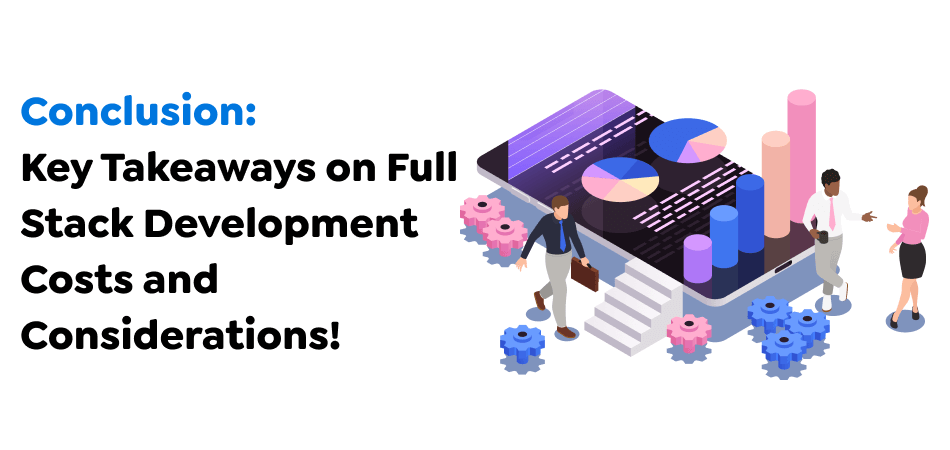
A Full-stack developer with vast experience handling the problematic projects involved in web-based applications or mobile development are the most important people for understanding business needs and the nature of the design process.
Know how users interact with the interface, framework, and management. Also, consider the planning and overall strategy of your venture and then determine a compromise between what you want and the budget (average wages) you have to satisfy your need for hiring a software developer in UAE for the company.
Ready to bring your app idea to life? Get in touch with Techugo today, and let’s create something extraordinary together!
Write Us
sales@techugo.comOr fill this form